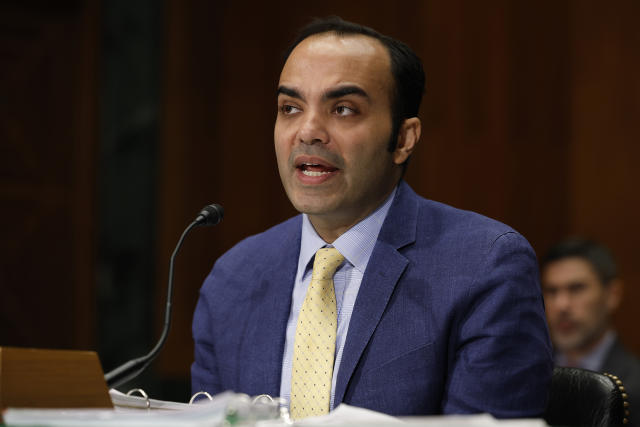Open banking – A global perspective
It is more than a decade since open banking arrived on the scene to a reluctant banking sector. That is just one reason why it has yet to reach its potential but it is in less developed markets where its impact promises to be revolutionary.
Open banking – the sharing of payment account data with another third party provider (TPP) (with the user’s consent) – was designed to bring access to a range of new banking services. For example, it makes it possible to obtain an overview of all of a user’s different bank accounts, across different providers, in one single app, to manage money via that app, and keep track of spending by category.
Europe lags in open banking adoption
Europe embraced open banking enthusiastically and believed that with the second Payment Services Directive (PSD2), which came into force in 2018, it had put in place a regulatory regime to ensure it thrived. Yet by 2021 less than 5 percent of consumers in the European Union were availing of open banking.
The European Commission acknowledges the disappointing pace of take-up: “To say that hasn’t reached its potential is rather an understatement,” commented Commissioner for Financial Services, Mairead McGuinness, in March.
The Commission has identified several reasons why this is so. Top of the list is how open banking providers connect with banks which share data – often via Fintech companies – through a type of software called an application programming interface, or API. According to the European Commission, APIs vary hugely in quality and functionality and often cause open banking operations to fail.
Another issue is trust. Potential open banking customers see privacy as a big concern and are unsure as to whether companies will respect customer data and use it in their best interests – meanwhile the rights and obligations of companies are unclear. Likewise, security and the risk of cyberattacks looms large.
All told, “The technical infrastructure for sharing data just isn’t in place. And the data to be shared isn’t standardized,” according to McGuinness, which means the Commission is “aiming to tackle problems with open banking as part of the revision of the Payment Services Directive” and to fix these problems without causing significant cost or disruption for those already engaged in open banking.

UK banks reluctant open banking converts
Outside the EU, the UK is considered one of the leaders in open banking. This was largely because the government there, through the Competition and Markets Authority (CMA), forced a reluctant banking sector to comply. Five years later, the CMA ruled last January that the six largest banks had implemented all of
the requirements of the Open Banking Roadmap.
In contrast to the European Union with its prescriptive, regulatory regime, the United States has until now adopted a more market-led approach to Open Banking – an approach that some see as more accommodating to innovation. Nonetheless, the director of the Consumer Financial Protection Bureau (CFPB), Rohit Chopra, in October 2022 announced the coming of a new US Open Banking Rule, with the aim to accelerate the move toward open banking through consolidation of personal financial data rights.

Director of the Consumer Financial Protection Bureau (CFPB), Rohit Chopra. Source: Yahoo Finance
US regime “broken”
According to Chopra, the new regulation will be a catalyst for more competition giving individuals and “nascent” firms more bargaining power and leverage. While consumers can currently permit access to their financial information through data brokers (or data “aggregators”), “the broader overall regime is broken because consumer access is based on a set of unstable and inconsistent norms across market participants.”
This means that even when large institutions that share personal data with their customers use APIs, “there is no guarantee those institutions don’t play games on availability, latency, and critical data points, like price.” Consequently, the CFPB is looking to “make these games much more difficult for users to play.”
Rise of embedded finance
One of the consequences of the US approach to open banking to date has been the rise of embedded finance – the placing of a financial product in a nonfinancial customer experience, journey, or platform. This has even greater potential in countries with relatively underdeveloped financial and banking infrastructure, for example India.
Most Indian adults (around 800 million) have a bank account, cost factors mean that commercial banks service only the top 100 million with financial services, such as loans, insurance, or wealth management. While India’s banks have been reluctant to get involved in open banking relationships (and India has no regulatory mandate forcing banks to share their customer data with third parties), embedded finance solves the cost of distribution problem for banks with less affluent customers. Of course, the risk is that banks then become highly commoditized with negative brand implications.

Open banking facilitates financial inclusion
But India, like many other less developed countries, sees the vast potential of open banking for financial inclusion and has created the infrastructure to make it easier. Aadhaar, the state national identity database, is designed to bring down the costs and risks of sharing customer information. Unified Payments Interface (UPI), the instant payment system developed by the National Payments Corporation of India (NCPI), enables common standards for digital payments. Aadhaar also provides a sandbox in which banks and FinTechs can collaborate and experiment.
This approach would appear to be a model from which many other jurisdictions can learn. Indeed, open banking has the potential for vast numbers of people to step on the banking and financial services ladder, leapfrogging traditional banking infrastructure hurdles in the same manner as the mobile payments
revolution.
Intuition Know-How has a number of tutorials related to the content of this article:
- Payments – An Introduction
- PSD2 & Open Banking
- Digital Money & Mobile Payments
- Information Technology (IT) in Business
- FinTech – An Introduction
- Data Security
- Cybercrime (2023)


